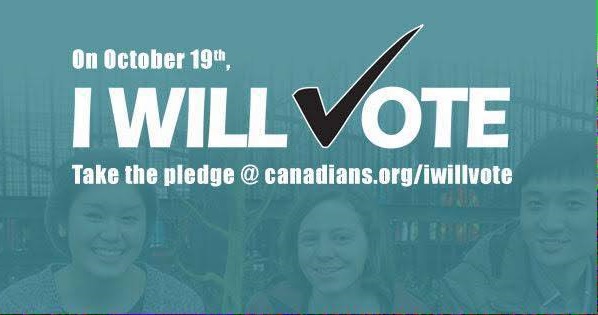Chip in to keep stories like these coming.
The outcome of election 2015 is far from certain. Significant shifts like those that happened in B.C., Alberta, and federally took place in the final days of those elections. If and/or when Harper loses it will be — at least in part — because movements showed him the door. And I mean that literally.
Three wild cards this election
Firstly, the legalization of voter suppression by the Unfair Elections Act is a major wild card that, as far as I can tell, hasn’t been factored into the various seat projections being made. Voter suppression could prevent tens of thousands of people from voting — both through the Unfair Elections Act and other as yet unforeseen dirty tricks. Those disproportionately targeted by the Unfair Elections Act tend to vote for parties other than the Conservatives, including students, people with disabilities, Indigenous people, and the homeless.
In the 2011 election, 400,000 people used Voter Information Cards and 120,000 relied on vouching to vote. Because of the Unfair Elections Act, this time they can’t. Another 1.4 million Canadians living abroad have recently been denied their right to vote. While voter turnout for this groups is traditionally rather low, a majority of the Canadian expats who do vote, tend to vote for parties other than the Conservatives. All of this may stack the deck in the Conservatives’ favour, but…
Secondly, the percent of undecided voters is somewhere between 7-20 per cent, depending on the poll. That’s close to the margin between the Conservatives, Liberals, and NDP as seen in the most recent national polls. There’s still a widely held sentiment that it’s time for change, which means we could see some noticeable shifts before election day.
There’s a third major wild card that could be the real game changer this election: widespread social movement organizing to increase voter turnout in battleground ridings.
Mobilizing the vote for change
Council of Canadians chapters in 15 ridings are regularly canvassing door-to-door, holding voter ID clinics, signing people up at farmers markets to vote, storming dorms to increase youth voter turnout on campuses, and more. Thousands of people are taking the Council’s voter pledge, committing to vote and to bring at least two people with them.
The Council is just one of many organizations and movements that are organizing to get out the vote in swing ridings across the country.
In the 15 years I’ve been involved in social movements, I’ve never seen the scale of on-the-ground organizing that’s taking place this election. I wrote a bit about this in the recent issue of the Canadian Centre for Policy Alternatives’ Monitor here.
In addition to several pan-Canadian campaigns of social justice groups, environmental organizations, and unions, marginalized and racialized communities are self-organizing through initiatives like Black Votes Matter, Canadian Muslim vote, and a variety of Indigenous rock the vote campaigns.
There are voter turnout campaigns by health care advocacy groups, anti-poverty groups, and climate justice organizations. Among the most potentially damaging to the Conservative base are the campaigns by veterans groups encouraging people to vote for other parties and the canvassing to save home mail delivery, both of which are cutting across party lines and could shift the balance in several tight races.
Even now, I’m still hearing about local get out the vote campaigns I’ve never heard of before in riding after riding every week.
On top of that, there’s real potential that both the Trans-Pacific Partnership and anti-Muslim gutter politics could backfire spectacularly on the Conservatives. This is especially true if social movement voter turnout campaigns can successfully point out that both of these issues prove Harper isn’t interested in representing our communities, our human rights, our jobs, our public services, or our democracy.
Showing Harper the door
This is where we can literally show Harper not just one door, but thousands and thousands of doors. Doors that our communities have opened to our movement, had conversations about democracy, and decided that yes, it is indeed time for change.
Canvassing by phone, door-to-door, and at pedestrian hubs has a measurable impact on elections, increasing voter turnout by anywhere between 3-15 per cent among those contacted, depending on the nature and scale of the organizing.
The impact of get out the vote campaigns is greater when voters are canvassed by people from their neighbourhood. Meeting face-to-face with people in our communities is crucial, especially at a time when more and more people are tuning out from media. What people do pay attention to is often dominated by talking points. The only reliable way of breaking through the noise is having one on one conversations — thousands of them.
Together we can still knock down the door of Harper’s re-election strategy.
So ignore the national “horse-race” polls, don’t panic, and when in doubt, knock on doors.
Chip in to keep stories like these coming.



